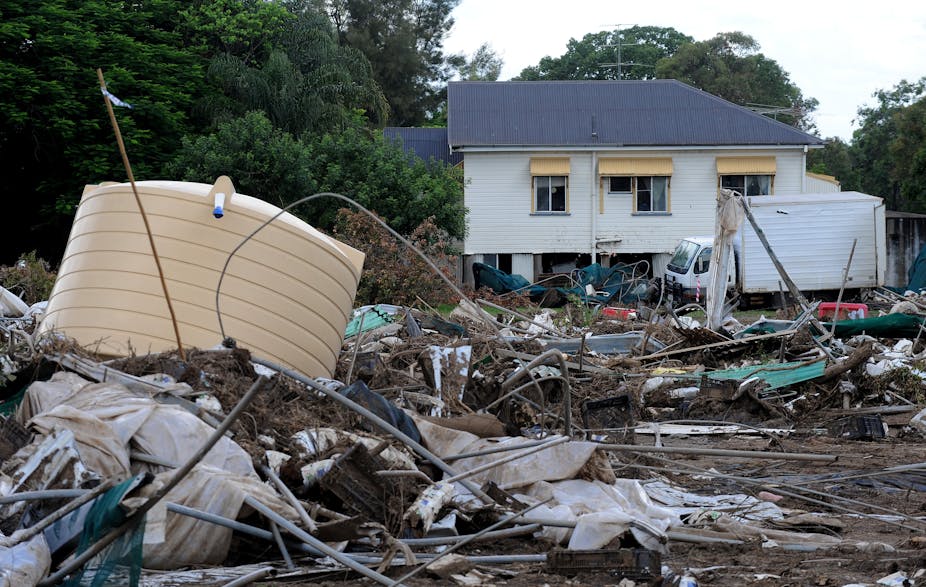Federal Attorney-General Robert McClelland has said that Australia needs to rethink its natural disaster policies if it wants to reduce disaster costs in the future and avoid becoming the insurer of last resort.
There is much in the Attorney-General’s speech to the Institute of Actuaries of Australia last week that is positive.
Resisting the temptation to sing in the chorus of unctuous post-event empathy, interleaved with exasperated criticism of the insurance industry, here was one of the top figures in the government asking hard questions about this nation’s approach to natural disasters, talking rationally about how to reduce the cost to individuals, communities and the economy.
“No matter how hard we try we will not be able to bring things back to the way they were. So recovery and reconstruction efforts shouldn’t be focused on the past. They should be focused on changing things for the better.”
He goes on to ask: “Are we making people less exposed to the impact of natural disasters?”
The answer to that question is, in a word, “no!”
In Australia, as is also the case elsewhere, people are migrating to the coast and the bush in areas prone to flooding, extreme weather and bushfires.
Consider the Gold Coast-Tweed Heads area where the numbers of dwellings have increased more than tenfold since 1966, while over the same period the average cost of a residential home has increased by around a factor of 40. All of this has taken place in an area prone to serious flooding.
In the communities of Marysville and Kinglake in the 2009 Victorian bushfires, for example, 25% of the homes destroyed were located within one metre of the bush. From the fire’s perspective, these homes were part of the fuel load. Some 60% of the destroyed homes were located within ten metres of the bush. The outcome is unsurprising, given fire conditions on that day.
Did many of the homeowners affected by the floods or bushfires understand their risk? Research conducted after the events suggests that it is unlikely that they did.
So what can we do? We can’t control the weather, but we can be more sensible about how and where we build.
Better land planning practices, improved building codes, investments in levees among other things could dramatically reduce the cost of natural events in Australia. Stopping the building of slab-on-ground construction on floodplains would be a sensible first step.
As a nation, we’ve already made great progress on wind resistant building design in tropical cyclone-prone areas. This came as a result of research and engineering studies undertaken after Cyclone Tracy.
As a consequence, modern residential buildings are now much more resilient to wind forcing than was previously the case. If we were still building homes as we did in 1974, when Tracy hit Darwin, then the costs of Yasi and Larry would have been much higher - perhaps double.
The Attorney-General is well aware of the discrepancy between this nation’s investment in risk reduction and the cost of natural disasters.
In particular, the Federal Government is dispensing $110 million over the next four years to states and territories for mitigation works - small fry when the Brisbane flood is expected to cost it in excess of $6 billion and the economy, $9 billion, in lost output.
Flood mapping and the reluctance of local councils in Queensland to release this information to insurers has received some attention, although not enough in my view.
The problem with flood mapping is not just the actual cost of the mapping, but the personal cost that it is perceived homeowners will have to bear. Once areas have been mapped, people are concerned that disclosure will negatively impact their property values.
This is one - of many - reasons why politicians of all persuasions have tended to steer away from making this information widely accessible.
But while new flood mapping will be a boon to engineers and consultants, it is not a panacea for reducing losses.
Strong legislation against building in such areas needs to be enacted. Existing flood mapping needs to be made publicly available and land planners have to be accountable for their decisions, despite pressures for increased housing development.
For those who already live in vulnerable homes on flood plains, and for whom relocation is not an option, councils need to provide assistance and incentives for retrofitting in order that householders can adapt to reduce risks as much as possible.
This will necessitate a change in how federal funding for disasters operates. Providing recovery grants following a disaster, as is the current policy, maintains the status quo and only increases the risks.
And if Australia does want to be proactive in reducing the costs of natural disasters, then policy change that supports mitigation and prioritises funding to reduce risks well ahead of a disaster is clearly a good place to start.
The Attorney-General’s speech provides us with some confidence that he is beginning to ask the right questions.

